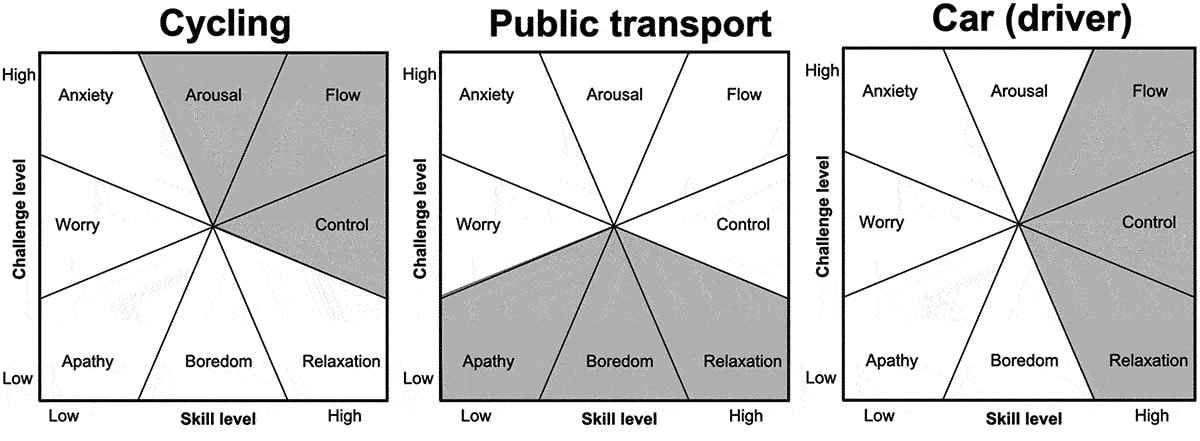Flow theory and everyday biking and walking
We tend to think of the time we spend commuting as time wasted. The more we spend going to or from work is time we could have spent on something more economic and useful. But a new paper challenges this notion with a concept called flow theory.
You can read the paper here: Have a good trip! Expanding our concepts of the quality of everyday travelling with flow theory.
…being ‘on the move’ is a rich experience interlaced with profound shared and individual meanings that can have positive implications on quality of life, well-being and personal development. Yet, mobility in general, and commuting in particular, is often reported as one of the least pleasant daily experiences and as a source of massive environmental impacts.
Flow theory is something we all know even if we haven’t seen its name before. It occurs when we focus our whole attention on an activity we deeply enjoy. We feel it when we make art, sing, dance, write, play games, or anything else that gets us “in the zone.”
If you don’t experience that feeling when you commute, you’re not alone. As the paper notes, most people rate commuting as one of their least enjoyable activities. However, that’s not always the case. When the COVID-19 lockdowns happened, many people realized they missed their commutes. Last year, CycleCommute.cc blogged about “COVID commuting,” which is what they called riding a bicycle just to get out of the house. In their words, it was a “time to clear my head and de-stress.”
Here’s a graph from the article, showing how different activities intersect with a spectrum of mental states:

This doesn’t mean any one mode is superior, but I can’t help but notice that riding a bicycle falls squarely in the upper-right corner, with flow in its center.
While it’s possible to experience flow while driving, it’s far more common in bicycle riders and walkers. Among the factors that make commuting enjoyable are physical activity and interacting with other people, especially with eye contact.
But it’s also possible to have a negative experience riding a bicycle, especially in areas heavy with cars. In one of my previous posts, Three modes of bicycle commuting, I mention how our infrastructure tries to make us ride bicycles as if we’re driving a car. That’s a sure way to swing our mental state to the other side of the chart, into the worry and anxiety zone.
Many of our institutional biases about everyday transportation have become self-fulfilling prophesies. Since we assume commuting is just wasting time between more important activities, we’ve turned our streets into dreary corridors of noise and car traffic. But that doesn’t have to be the case. Imagine if we actually tried to make our streets enjoyable to travel through, and made people want to be in our streets!
All of this gives us an interesting new way to approach everyday biking and walking. What gets you “in the zone” when you commute? What takes you out of the zone? What can we do to make that flow state happen a little bit more often?
